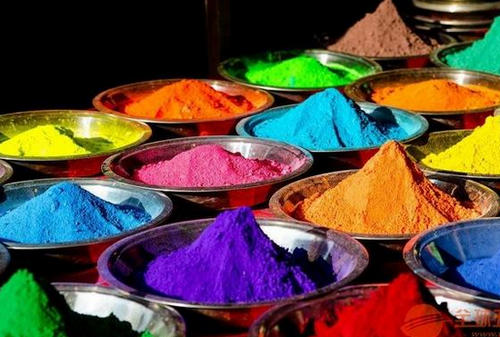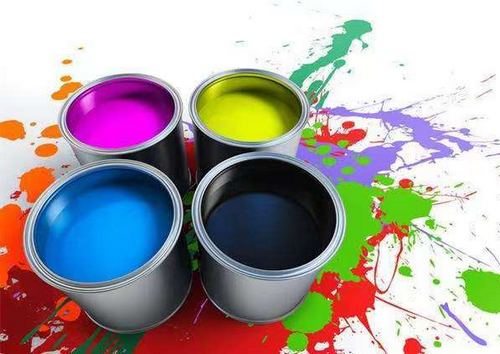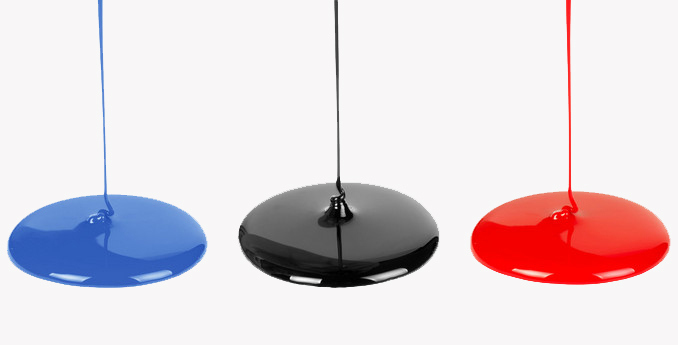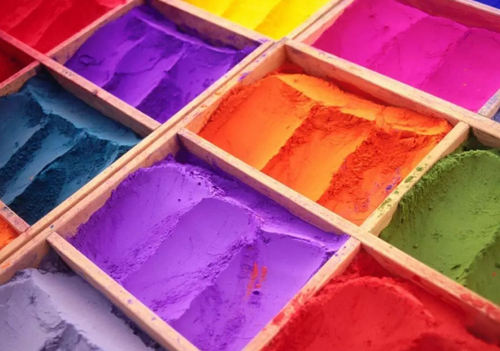The colorants used in paints are mainly inorganic pigments, among which chromium white occupies the first place, followed by iron oxide red, chrome yellow, lead powder and other varieties. Paints also use some organic pigments with good weather resistance, especially pigment red and pigment blue. The requirements of paints for pigments vary with the types and usage requirements of the paints. In general, when selecting pigments, the influence of the following factors should be considered comprehensively to select the pigment varieties and models that are suitable for the application performance requirements of the paint.

Dispersibility Factors
When manufacturing paints, we hope that the pigments can be well dispersed in the paint base material and can achieve good fineness. Fineness indicators are listed in the paint standards, such as requiring the fineness of the paint to be less than 15pm. When grinding, the pigments are required to reach the required fineness indicators quickly. Some pigments are difficult to disperse, such as carbon black, iron blue and other varieties. If the difficult-to-disperse pigments are ground in the middle of the same type of grinding equipment with the easy-to-disperse pigments, it can be compared that the grinding time required to achieve the required fineness is very different. The grinding time of pigments that are difficult to disperse is much longer, and a lot of energy is consumed. For this reason, measures are usually taken to improve the dispersion performance of pigments when manufacturing pigments, so that the dispersion of pigments is improved, which can reduce grinding time and save energy. For example, the manufacture of easily dispersible pigments or color pastes and other processed pigments is proposed to improve the dispersion of pigments.
When pigments with good dispersibility are used to make paint, the quality of the paint can also be improved accordingly. If the fineness of the paint meets the standard, the whole system is relatively stable, and the pigments are not easy to aggregate into large particles and sink to the bottom during storage. The paint film is relatively smooth and has good water resistance.
Light Resistance And Weather Resistance Factors
The light resistance of the pigment is evaluated after artificial exposure with reference to the wool fading standard, with level 8 being the best and level 1 being the worst. Weather resistance is evaluated after two years of outdoor exposure, with level 5 being the best and level 1 being the worst.
Most coloring pigments are used after being diluted with white pigments. The lightfastness and weather resistance of pigments often change after dilution. Some organic pigments have a significant downward trend in weatherfastness and lightfastness after dilution. Therefore, this change factor should be taken into account when selecting pigments.
Among organic pigments, there are some pigment varieties with particularly excellent lightfastness, such as dioxazine violet, phthalocyanine blue, phthalocyanine green, isoindolinone yellow, camel red, quinacridone red, pyrrolopyrrole red, etc. Rutile titanium dioxide and surface-treated chrome yellow, molybdenum chrome red, etc. have good weather resistance and can meet the requirements of lightfastness and weather resistance factors, but they should also be determined based on the use environment and the requirements for the application performance of the coating.

Heat Resistance Factor
Baking paint requires drying at 80~100℃ or even 120~130℃, so the pigments used to prepare baking paint must be at least resistant to 150℃ to ensure that they do not change color after drying. Generally, organic pigments are not as heat-resistant as inorganic pigments, but some varieties such as phthalocyanine blue also have good heat resistance. If you want to use pigments with poor temperature resistance, you can only use low-temperature baking paint. Inorganic pigments are indispensable for high-temperature resistant color pigments, including pot red, cadmium yellow, ultramarine, and iron oxide red. Iron tantalum and metallic pigments have excellent high-temperature resistance and can be used in high-temperature resistant coatings.
Solvent Resistance Factor
Most inorganic pigments do not have solvent resistance problems, and solvent resistance is mainly for organic pigments. When some organic pigments are dissolved in strong solvents, they are prone to color bleeding, especially in volatile paints containing strong solvents. Therefore, when choosing organic pigments, they should be carefully tested and experimented before selection.
Water Resistance Factor
Pigments with poor water resistance will affect the quality of the coating when used in coatings. If the water resistance is poor, the color of the pigment will seep into the water, resulting in spots and streaks. Some inorganic pigments with high water solubility and salt pigments and lake pigments in organic pigments have some problems. Most pigments have good water resistance.
Acid Resistance Factor
Some pigments are not acid-resistant, so they cannot be used in paints with acidic curing agents. The paints made are also not suitable for use in acidic environments. Varieties with excellent acid resistance include titanium dioxide, iron blue, chromium oxide green and azo pigments in organic pigments. Varieties with poor acid resistance include zinc oxide, cadmium red, cadmium yellow, orange chrome yellow, molybdenum chromium red, ultramarine, calcium carbonate and benzidine and toluidine pigments in organic pigments.
Alkali Resistance Factor
Alkali resistance is a necessary characteristic for making alkali-resistant paints. For example, some vehicles are often washed with alkaline detergents, and paints with poor alkali resistance are prone to discoloration. Varieties with excellent alkali resistance include zinc oxide, lead powder, titanium dioxide, orange chrome yellow, cadmium red, cadmium yellow, ultramarine, etc. Pigments with poor alkali resistance include chromium yellow, iron blue and some organic pigments.

Resistance To Other Chemicals
Some coatings are used for corrosion protection and resistance to certain chemicals, and the pigments used should also have this characteristic. In addition, some coatings use various types of curing agents, and the pigments must be able to withstand various curing agents in order to make the color of these coatings stable and unaffected.
Density Factor
Some pigments have too large a difference in density, and stratification often occurs in the coating or floating color occurs in the coating film. Generally, some adjustments to the volume concentration of the pigment (PVC) or the addition of surfactants can be used to solve this problem. Some pigments are prone to chemical reactions with each other, so they should not be mixed. For example, pigments with poor acid resistance should not be mixed with alkaline pigments, and vice versa. Lead-containing pigments should not be mixed with sulfur-containing pigments. Generally, chrome yellow and ultramarine, lead white and mercuric sulfide are not easy to match.
Toxicity Factors Of Pigments
Some pigments contain heavy metals and are not suitable for preparing toy paints. For example, chrome yellow cannot be used in toy paints because it contains lead and has been replaced by organic yellow pigments. Generally, pigments containing lead, mercury and cadmium are toxic pigments. The state has set indicators for the minimum limit of heavy metals for organic pigments. In addition, some residual intermediates in pigments, such as polychlorinated biphenyls and PCBs in phthalocyanine blue, have strict limit regulations. In the process of selecting pigments, we must consider these factors comprehensively and finally select pigments that meet the application performance requirements of coatings.
Coating System Matching Stability Factors
A complete coating system is composed of resins, pigments, fillers, solvents, additives and other components. When designing coating formulas, in order to make the coating system have good and stable application performance. It should be reasonably matched according to the acid-base properties of resins, pigments and solvents. That is, in general, acidic resins should choose alkaline solvents and pigments with alkaline surfaces to obtain ideal dissolution effects and better gloss and tinting strength; alkaline resins should choose acidic solvents and pigments with acidic surfaces to obtain ideal dissolution effects and better gloss and tinting strength. As for neutral or amphoteric resins, solvents and pigments, since their selection range is relatively wide, they are basically not affected by this factor.

Acidic resins include cellulose butyl acetate, methyl acrylate, ethyl acrylate, polyvinyl acetate, maleic resin, etc.; acidic solvents include formic acid, acetic acid, chloroform, etc.; acidic pigments include azo lake pigments and phthalocyanine green A, phthalocyanine green B, blue anthrone, etc.
Alkaline resins include melamine, urea formaldehyde, polyamide, alkyd resin, etc.; alkaline solvents include ketones, esters, ethers and certain aromatic hydrocarbons, etc.; alkaline pigments include acetyl acetyl aromatic gum and phthalocyanine blue A, phthalocyanine blue B, phthalocyanine blue C, anthraquinone pigments, etc.





